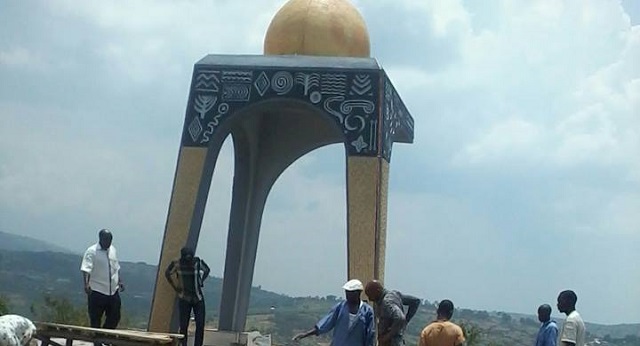
And its monument gaining international significance
Kampala, Uganda | DOMINIC MUWANGUZI | About 600 years ago, in 1520AD, three powerful kingdoms thrived in present day central and western Uganda. Located in triangular formation with Buganda, which occupied a long a narrow swath along the shores of Lake Victoria facing Bunyoro-Kitara to the northwest and Nkole to the southwest.
Bunyoro was the biggest but its martial King; Olimi 1 Rukidi Rwitamahanga wanted more. So he raided tiny Nkole and easily overrun it; pillaging its cattle and women, and causing a great famine called “ijunga nyonga” within the Kingdom. Nkole continued to fight back and during one of the battles in broad daylight, something unheard of and never seen before happened. Darkness fell on the battlefield at Biharwe hill.
The Bunyoro soldiers, fearing that it was an apparition of Ankore spirits intervening on the side of the Nkole fighters, fled from battle and out of the kingdom. The Nkore kingdom soldiers celebrated the unusual victory and the battle became etched in the kingdom folklore. Today, of course, we know that was the total eclipse of 1.30PM on April 17, 1520 that lasted 5 minutes and 15 seconds.
But that has not stopped the Nkole people from celebrating Biharwe hill as a “sacred and historic site” at the Biharwe Eclipse monument shows. Constructed to commemorate the incident, it stands atop Biharwe hill approximately 6kms from Mbarara town on the Mbarara- Masaka highway.
To reflect the present day unity between the once-warring kingdoms, the monument is built in lineal form, with three pillars symbolising the three kings of the period; Olimi of Bunyoro, Ntare1 Nyabugarobwera of Nkole, Nakibinge of Buganda. According to folklore, Bunyoro had raided Buganda with intent to bring back Buganda to Kitara. In the centre of the monument, on top, is an orange round figurine, symbolising the sun that is synonymous with the eclipse. On the upper exterior of the monument are Ankole wall patterns that give it cultural quality.
The theme of cultural identity and significance is very much on display in the neighbouring Igongo Cultural Museum which features cultural norms and practices of the Ankole people in figurative and realistic forms. For example, the museum preserves many utilitarian objects used by the two Nkole tribes; the Bahingi (crop- farmers) and Abarisa aka “Omutungi w’e nte” (cattle-keepers) in their households. The dissimilarity of objects they used in their day to day life is striking. For example, in the Bahingi household the women grinded millet as the daily menu and there was a fire-place to prepare it. On the other-hand, within the Abarisa home, the inhabitants fed only on milk and roasted meat, hence the dominant presence of the milk gourd used to carry and preserve the milk. The women from this household were also very ornamental in their physical presentation, evidenced by their hairstyles that involved shaving concentric designs within the hair and wearing bracelets around their waists.
The traditional wall patterns on the Nkole households- huts- suggested the residents’ lifestyle in the aspects of medicine, astronomy, entertainment and spiritualism. The huts decorated with such imagery, were often used for official celebrations like giving away a girl into marriage and, therefore, signified an element of purity and holiness. They are true testimony to the overall early civilization of this region.
The Ankole people were well organised in four clans; Abahinda, Abashambo, Abagahe and Abaishikatwa, a symbol of cultural dynamism and commonality visible African monarchs that decentralised political powers through chiefs. Like Buganda, the kings of Nkole distributed their political powers through a prime minister and chiefs who also wielded authority. The hairstyles, thrones (chief’s official seats) and gourds evoked such supremacy in their day to day life.
The Biharwe Eclipse monument and installation might have been constructed as a cultural museum, to bring to life the cultural history of Nkole that mirrors their cherished traditional norms and beliefs and attract tourists to view their cultural identity and values. But in this post- modern era of globalisation, Biharwe monument is acknowledged internationally. The auspicious date is, for example, used to calculate periods in which the different Kings of the Great Lakes region reigned. The monument was constructed by Joseph Ssematimba, a Makerere University senior Lecturer in the Department of Industrial and Fine Arts.
 The Independent Uganda: You get the Truth we Pay the Price
The Independent Uganda: You get the Truth we Pay the Price



